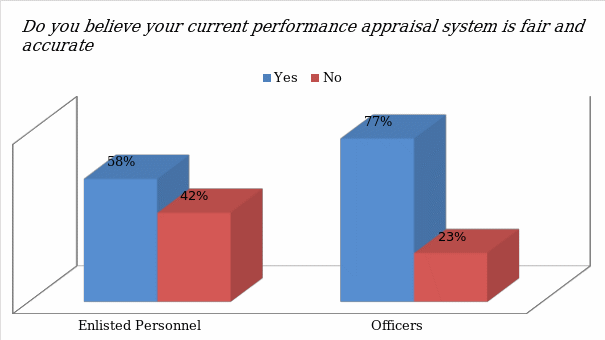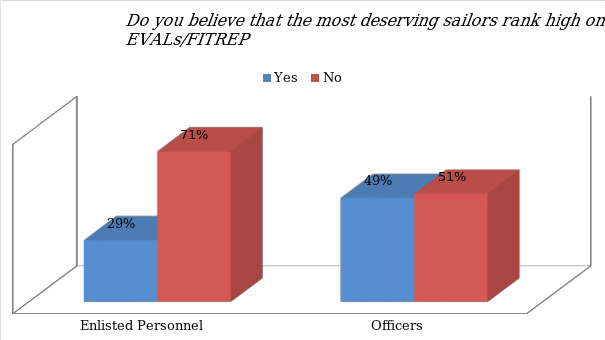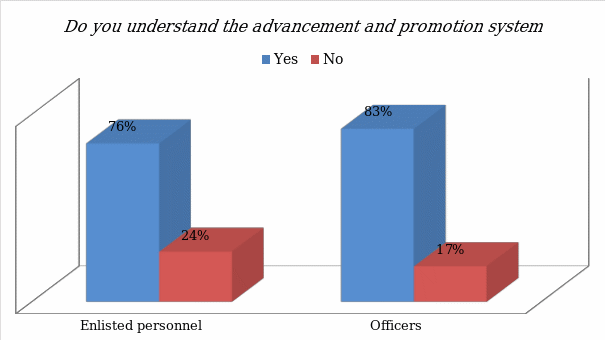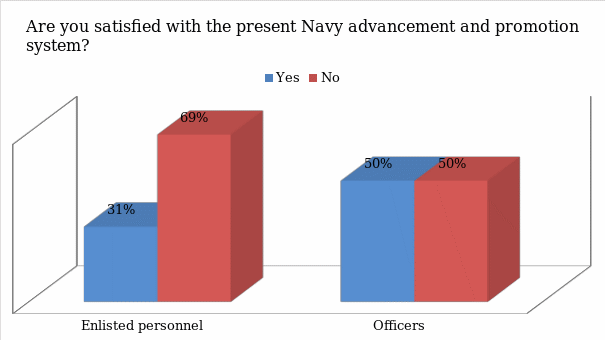Description of the Human Resource Management Issue and the Organization
The United States Navy is one of the branches of the US Armed Forces responsible for the protection of the country against any external threats. Founded in 1775, the Navy has played a critical role in enhancing the security of the country and promoting socio-economic and political growth (Symonds, 2018). The Department of the Navy has experienced consistent growth over the years in terms of its personnel and assets needed to facilitate its operation around the borders of the country and in the international arena. According to Clark et al. (2017), the Navy has 336,978 active personnel, 101,583 ready reserve personnel, and 279,471 civilian employees, making it the largest navy unit in the world. The government has been investing heavily in equipping this department and training its personnel so that they can perform optimally in their respective assignments. Despite these efforts, Abdo (2019) explains that a trend has been witnessed where a significant number of active-duty personnel do not take more than five years in the forces after their pass out.
One of the issues believed to be contributing to this turnover of employees is the performance management approach that is used. Some of the personnel have noted that they are not satisfied with the approach that the management has embraced in reviewing individuals’ performance with the aim of promoting them. With such a large workforce, it may not be easy to give proper attention to every employee. However, Armstrong (2008) believes that there should be a system that can facilitate an accurate assessment of everyone’s performance so that people can be promoted based on their skills, capabilities, and commitment.
When assessing performance management in the United States Navy, the researcher was keen to investigate how this institution plans, sets goals, monitors, coaches, mentors, and reviews individual employees’ performance. It became apparent that the top commanders of this organization have one of the best strategic planning systems that clearly define specific goals that have to be realized using given resources within a particular time. The task of every individual personnel is also defined in clear terms, with an effective system of monitoring, coaching, mentoring, and providing reviews of performance. Such supervisory tasks are often conducted by platoon and unit commanders. However, it was evident that such precision in supervision only works during combat assignments. A major improvement is needed to facilitate effective performance appraisal and management during non-combat assignments to help maintain high retention levels.
The researcher selected performance management as the problem to be studied because it is one of the main reasons why many officers choose to pursue other careers after staying in the military for a few years. Addressing this problem will help in ensuring that everyone remains focused and encouraged to improve their skills in the workplace so that they can end up having a successful military career. Studies have shown that without proper guidance, role models, and reasonable goals, employees would lack a clear path to advance their careers (Hales & Pronovost, 2006). Based on personal experience, the researcher believes that effective workplace performance can help in motivating employees and provide them with the opportunity to achieve career growth. They will realize that they can achieve what they desire within the Navy instead of exploring new opportunities in other organizations. The performance management problem is causing a new challenge of a high turnover rate of personnel within the Department of the Navy. As Marr (2007) explains, it takes time and resources to equip a new employee with the right skills and knowledge on how to undertake specific tasks. The department can reduce its overall expenses by retaining its current employees for longer instead of losing them and recruiting others who have to go through the same rigorous and costly training.
Data Supporting Researcher’s Perspective on the Problem
It was essential to collect data about performance management at the Department of the Navy to understand how effective it is in meeting the expectations of the serving personnel. It was important to collect current data on the issue to help in explaining the level of satisfaction of the officers within this organization. Given the fact that the researcher was a serving officer with the Navy, it was easy to reach out to former colleagues who are still in active service to understand their views on this issue. A simple questionnaire was developed to help with online interviews. The primary data source was the most desirable source of current information on the issue. The researcher was able to interview 15 officers and 15 enlisted personnel.
One of the first questions that the researcher wanted to address was whether the respondents believed that the current performance appraisal system is fair and accurate. When the question was presented to them, figure 1 below shows the response that was obtained. It was apparent that 58% of the enlisted officers felt that the system is fair. 42% had a contrary opinion. On the other hand, 77% of the serving officers felt that the current appraisal system is fair. Only 23% of the officers felt that it was unfair and needed to be addressed.

The focus was narrowed further down to determine whether the respondents believed that the most deserving sailors are promoted to higher ranks. As Kloot and Martin (2000) explain, the system may be effective, but sometimes the implementation process may be a problem. As shown in figure 2 below, the majority of the respondents do not feel that the most deserving officers are promoted to the higher ranks. 71% of the enlisted personnel and 51% of the officers felt that some of the sailors holding high ranks are not the most deserving. It is apparent that even though the majority of these respondents feel that the appraisal and promotion system meets their expectations, those who are deserving of promotion are denied the opportunity.

The researcher was interested in determining whether the respondents understood the advancement and promotion system. As Roberts and Wargo (1994) explain, employees need to acknowledge the approach that an organization uses to promote its workers. It enables them to realize what to expect, which helps to lower levels of dissatisfaction. As shown in figure 3 below, it is evident that an overwhelming majority of the respondents understand the system. 76% of the enlisted personnel and 83% of the officers stated that they acknowledge the advancement and promotion system. It means that they know what to do in case they are keen on advancing their career.

Knowing the promotion system makes it easy for these officers to understand how to achieve career success in the Navy. The researcher asked the participants if they were satisfied with the present Navy advancement and promotion system. The response obtained, as shown in figure 3 below, shows that there is a problem at the Department of the Navy. 69% of the enlisted personnel stated that they are not satisfied with the system. Almost a similar response was obtained from the officers because 50% of them stated that they are not satisfied with the system either.

The statistical analysis of the responses obtained from primary data shows that the Department of the Navy has made an effort to develop a performance appraisal system to help assess the individual performance of the workers. However, it is evident from the analysis that serving officers feel that there are some weaknesses that need to be changed for them to be satisfied. As Brule (2017) explains, when employees feel dissatisfied with such an important system of performance management, they are likely to seek other opportunities. The top command unit of the department must find ways of addressing these concerns to reduce employees’ turnover rates.
Analysis of the Situation in Terms of the Relevant Key Topic
The gathered data reaffirms the fear that there is a performance management problem at the United States Department of the Navy. The organization has over 700,000 employees working in different units, as shown above. It is almost impossible for the top managers to provide individualized attention to everyone. However, Hays (2019) observes that it is possible to develop a system that will facilitate fair performance appraisal of every employee. Whenever the organization hires an employee and assigns them a specific task, there is always a definite goal that is expected of them to realize. Having a system that can effectively evaluate how well they meet these objectives is essential in determining when they deserve promotions so that they can handle more demanding and rewarding tasks. The analysis of the current situation shows that the appraisal system has been developed, but it has failed to ensure that the most deserving individuals are promoted.
It is important to understand both the practice and context of the problem being addressed. In the military, unionization is not acceptable. One is expected to follow orders strictly and there is very little room for the officers to demand promotion (Yammarino et al., 1993). In this context, one has no option but to wait for the superiors to decide when they will rise to the next rank. When one sees a less deserving person being promoted, as has been shown to be a common occurrence in the data above, they will be unhappy. However, they cannot force the superior officers to explain how they were denied the promotion they deserve. They are expected to be obedient and follow orders given to them strictly and without challenging the authority.
In most cases, the outcome of this practice is the exit of the serving officer so that they can pursue their career in other fields. As Stimson (2018) explains, when joining the military, the majority of the recruits often envision a long-term career, raising the ranks to top positions within the department. However, it often changes when they pass out and expect to achieve career success they so desired. They realize that they had misplaced expectations. They get frustrated along the way as they realize that it is almost impossible to get a promotion at the expected pace. Their frustration would be worsened if they realize that the system is rewarding the less qualified individuals. The United States Navy plays a crucial role in protecting the country and her allies from aggression. As such, it is important to ensure that its workforce is constantly satisfied with systems and structures put in place to protect their interests.
Recommendations to Improve the Situation
The analysis reveals that there is a problem that needs to be addressed by the top command unit of the United States Navy. The most important action that the management unit should focus on is how to improve its advancement and promotion system. The respondents have addressed their concern over the issue as they feel that not enough has been done to address the problem. According to Hester and Adams (2017), many organizations have embraced the concept of peer-reviews as one of the ways of promoting their employees. The management can introduce the same approach in its advancement and promotion system. This hybrid system of promotion is recommended because it integrates the traditional approach that is based on the performance appraisal and the new approach based on peer reviews.
The new system will promote an active involvement of the personnel in promoting officers. In the analysis, one of the main issues that emerged in the current performance management system is that cases, where less deserving people are promoted to higher ranks, are becoming common, leading to the dissatisfaction of some officers (Cascio, 2010). The new system will introduce an important change meant to eliminate the problem. By implementing a new grading system based on peer-reviews, officers will feel that they have been involved in the promotion of their colleagues. They will not complain of having a biased system that favors a few at the expense of the majority.
The desired outcome after studying the issue is that the top commanders of the Navy will gain knowledge about unique challenges that affect their subordinates and how the problem can be solved. They need to understand why cases of employee turnover are becoming common in the country at a time when it is keen on improving its capabilities. Hays (2019) explains that it is often easy to forget about employees, especially in a large organization such as the Navy, but everyone has an important role to play and it is vital to recognize that fact. As such, the management needs to introduce new programs and ways that the United States Navy can incorporate in performance management. The proposed change in the approach that the organization is currently using will ensure that everyone feels protected and their interests are taken care of despite the large size of the organization.
The new approach to performance management at the Navy will help in enhancing retention rates, improve loyalty, and ensure that most of these employees are willing to stay within the organization for over 20 years. The new approach will significantly improve the level of satisfaction and morale of employees. It will help them to understand that their career growth primarily depends on their effort and their ability to interact positively with their peers and engage their superiors in a positive advancement of the organization’s goals. Cases of dissatisfaction caused by a feeling that a few are getting promotions because of their connection within the military will be eliminated.
Implementation and Action Plan
The researcher has recommended a change in the performance management approach where the human resource department of the Navy will be required to introduce a hybrid advancement and promotion system. Implementing this system will require a major policy change within the Department of the Navy. Currently, reports from colleagues play a significant role in defining the career advancement of sailors within this department. However, a properly structured system where information from officers about their colleagues are collected, assessed, verified, and used in defining the need for one to be promoted is still lacking. The implementation will start with a policy change. The proposal will have to be presented to the United States Department of Defense for approval because it is a major shift from the traditional approach used in promoting officers.
When the policy is approved, the first step will be awareness creation among the entire personnel. That will involve informing them of the new policy, its significance and benefits to all stakeholders, and reasons why it should not be abused. Hester and Adams (2017) believe that it is common to find cases where people would abuse such privileges by providing misleading reports against those they consider their rivals. Once the awareness campaign is done, the human resource management unit will develop a system where officers will provide an assessment of their colleagues after every four months. They have to provide proof for their reports, especially when their review may have a significant impact on one’s career.
Once these reports are provided, a team of officers will go through each of them, verifying claims made. Whenever necessary, an officer may be summoned to provide more information or proof about claims they have made in favor of or against a colleague. Stimson (2018) warns that when such reviews are provided anonymously, chances of providing misleading information may be high because one will know that they will not be held accountable for their report. They have to be aware of the significance of this process, which means that transparency and truthfulness will be cardinal. The process should last about four months.
The review team will then compile their report for each officer, providing points based on the outcome of the process. The officers can then be classified into five classes based on their points. The classes include those who highly deserve a promotion, those who deserve a promotion, those who may need to retain their current position, those who deserve demotion, and those who should summarily be dismissed from the forces. The first class of those who highly deserves to be promoted will be those of the highest score, while those who deserve dismissal are those with a negative score. The score should account for 50% of the promotion index. The other 50% will come from the traditional approach based on the reviews of the superiors. The approach will improve the level of satisfaction of officers and reduce the rate of employee turnover.
References
Abdo, K. (2019). United States Navy. Abdo Zoom.
Armstrong, M. (2008). Performance management: key strategies and practical guidelines. Kogan Page.
Brule, D. (2017). Just breathe: Mastering breathwork for success in life, love, business, and beyond. Simon and Schuster.
Cascio, W. F. (2010). Managing human resources: productivity, quality of work life, profits. McGraw-Hill Irwin.
Clark, G. R., Krafft, H. F., Alden, C. S., & Stevens, W. O. (2017). A short history of the United States Navy. Wipf and Stock.
Hales, B. M., & Pronovost, P. J. (2006). The checklist: A tool for error management and performance improvement. Journal of Critical Care, 21(3), 231–235.
Hays, N. (2019). Elite: How to raise your potential, your performance, and your game. John Wiley.
Hester, P. T., & Adams, M. G. (2017). Systemic decision making: Fundamentals for addressing problems and messes. Springer International Publishing.
Kloot, L., & Martin, J. (2000). Strategic performance management: A balanced approach to performance management issues in local government. Management Accounting Research, 11(2), 231-251.
Marr, B. (2007). Strategic performance management: Leveraging and measuring your intangible value drivers. Strategic Direction, 24(1).
Roberts, N. C., & Wargo, L. (1994). The dilemma of planning in large-scale public organizations: The case of the United States Navy. Journal of Public Administration Research and Theory, 4(4), 469-491.
Stimson, W. A. (2018). Forensic systems engineering: Evaluating operations by discovery. John Wiley & Sons.
Symonds, C. L. (2018). American naval history. Oxford University Press.
Yammarino, F. J., Spangler, W. D., & Bass, B. M. (1993). Transformational leadership and performance: A longitudinal investigation. The Leadership Quarterly, 4(1), 81-102.
